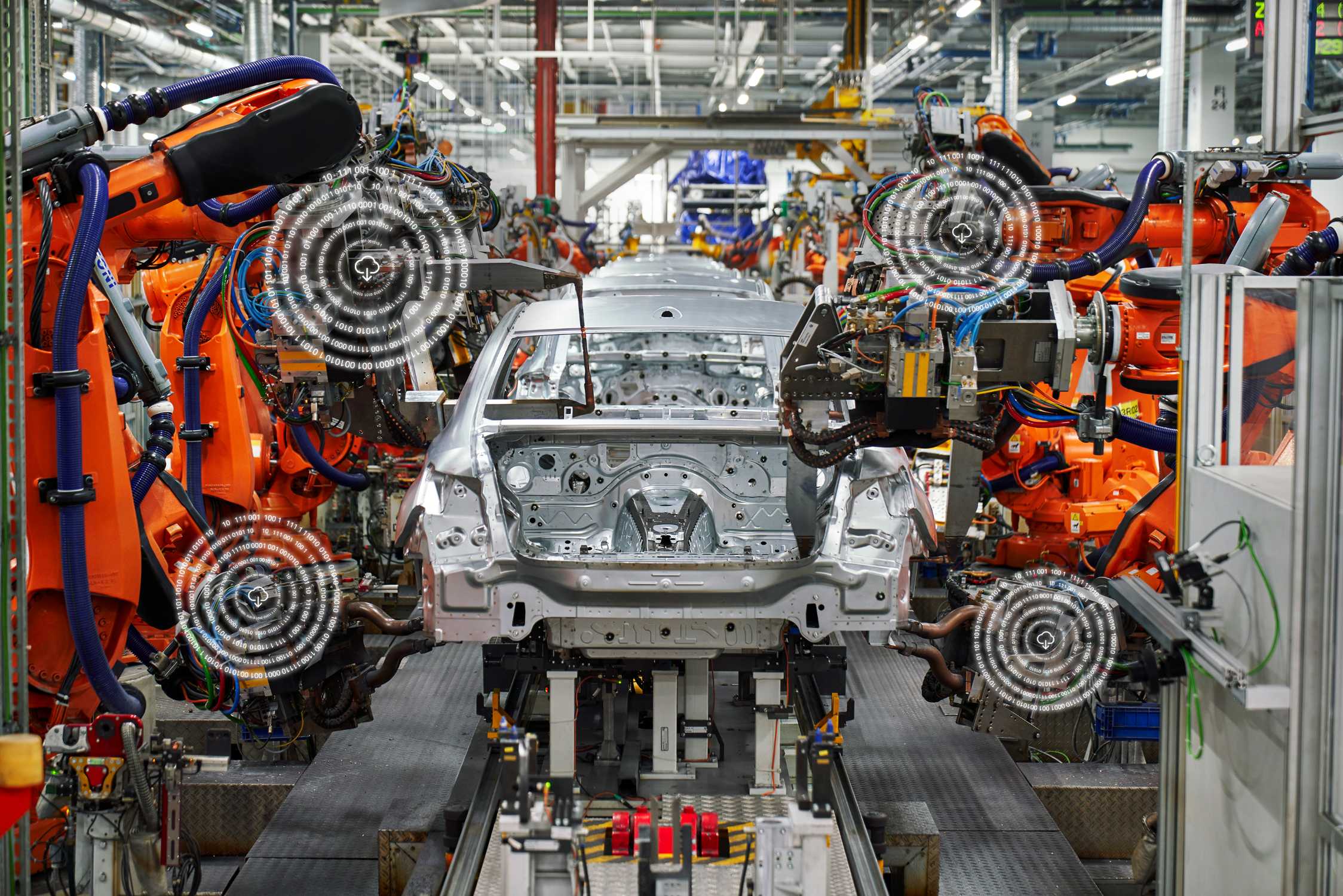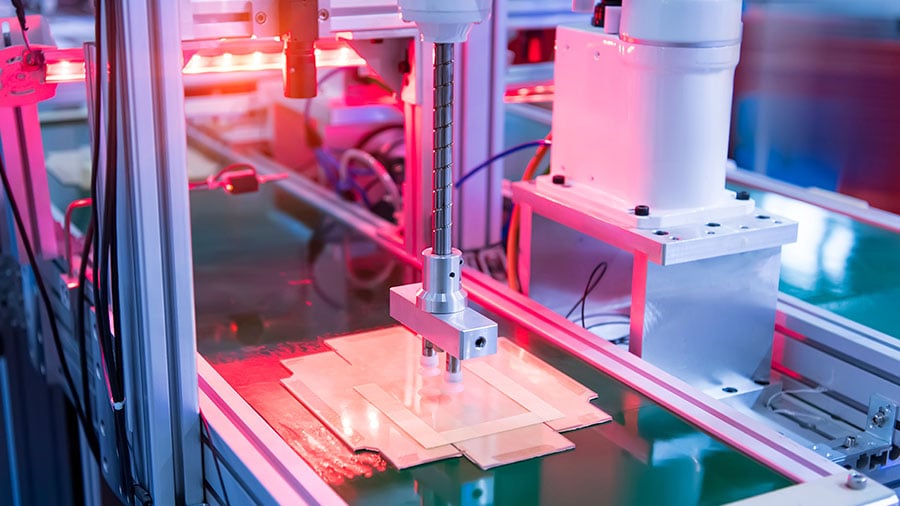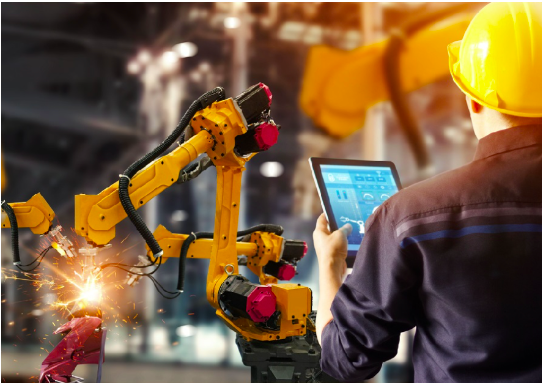Maximizing Efficiency with IIoT and Smart Manufacturing
The Industrial Internet of Things (IIoT) is transforming the manufacturing industry, enabling manufacturers to collect and analyze data from...
5 min read
Ömer Ali Güneş
:
Sep 6, 2023 11:14:17 AM
Predictive maintenance is a cutting-edge approach that leverages technology to predict equipment failures before they occur, allowing manufacturers to perform maintenance only when necessary. In today's highly competitive manufacturing landscape, minimizing downtime and reducing maintenance costs is critical for staying ahead.
IoT technology, with its ability to connect and gather data from various sensors and devices, is reshaping how manufacturers approach maintenance strategies.
Traditional maintenance methods often rely on fixed schedules or reactive responses to equipment breakdowns, resulting in unnecessary downtime and expenses.
Predictive maintenance, on the other hand, uses IoT sensors to continuously monitor the health of machinery, collect real-time data, and apply advanced analytics to forecast potential issues.
 In today's highly competitive manufacturing landscape, minimizing downtime and reducing maintenance costs is critical for staying ahead.
In today's highly competitive manufacturing landscape, minimizing downtime and reducing maintenance costs is critical for staying ahead.
By embracing IoT-powered predictive maintenance, manufacturers can transition from a reactive to a proactive approach, ensuring equipment reliability and production efficiency.
This blog post explores the role of the Internet of Things (IoT) in revolutionizing predictive maintenance practices within manufacturing operations.
1-) Understanding Predictive Maintenance
2-) The Internet of Things (IoT) in Manufacturing
3-) IoT and Predictive Maintenance
4-) Key Components of IoT-Powered Predictive Maintenance
5-) Benefits of IoT-Enabled Predictive Maintenance
6-) Challenges and Considerations
7-) Future Trends and Developments
RELATED:
MAXIMIZING EFFICIENCY WITH IIOT AND SMART MANUFACTURING
1. Understanding Predictive Maintenance
Predictive maintenance is a data-driven approach that aims to forecast equipment failures based on the analysis of historical and real-time data. Its primary objective is to schedule maintenance activities when they are most needed, avoiding both premature replacements and unexpected breakdowns.
The conventional methods of maintenance, such as preventive and corrective maintenance, often lead to unnecessary downtime and increased costs. Predictive maintenance, driven by IoT technology, shifts the paradigm by allowing manufacturers to address issues precisely when they arise, ensuring smoother operations and cost savings.
In manufacturing, where every minute of downtime can have a significant impact on productivity and profitability, predictive maintenance is a game-changer.
By harnessing the power of IoT sensors and data analytics, manufacturers can gain deeper insights into the condition of their equipment.
This data-driven approach enables them to detect anomalies, track performance trends, and identify potential failures well in advance. Consequently, it empowers maintenance teams to plan and execute maintenance activities more efficiently, reducing downtime and optimizing resource allocation.
Predictive maintenance aligns with the goal of maximizing equipment uptime while minimizing maintenance costs, making it a pivotal strategy in the manufacturing industry's quest for competitiveness and efficiency.
 Predictive maintenance, driven by IoT technology, shifts the paradigm by allowing manufacturers to address issues precisely when they arise, ensuring smoother operations and cost savings.
Predictive maintenance, driven by IoT technology, shifts the paradigm by allowing manufacturers to address issues precisely when they arise, ensuring smoother operations and cost savings.
2. The Internet of Things (IoT) in Manufacturing
The Internet of Things (IoT) has emerged as a transformative force in manufacturing, connecting machines, devices, and systems to create a network of intelligent data-sharing entities. In a manufacturing context, IoT encompasses a wide range of technologies, including sensors, actuators, and communication protocols.
These components work together to gather data from equipment, monitor environmental conditions, and transmit information to centralized systems or the cloud. IoT enables real-time visibility into the production process, facilitating informed decision-making and optimization opportunities.
RELATED:
TOP IOT INDUSTRY 4.0 MANUFACTURING USE CASES
IoT's significance in manufacturing extends beyond predictive maintenance; it impacts various aspects of the production environment. IoT sensors placed on machinery can monitor factors like temperature, humidity, vibration, and energy consumption, providing a comprehensive view of equipment health.
Beyond that, IoT enables the creation of digital twins, and virtual representations of physical assets, allowing manufacturers to simulate and test scenarios for better decision-making and process improvement.
Furthermore, IoT enhances supply chain management by tracking inventory, monitoring logistics, and ensuring product quality throughout the manufacturing journey. Its potential applications are diverse and continue to expand as technology evolves, making IoT a cornerstone of modern manufacturing.
3. IoT and Predictive Maintenance
The convergence of IoT technology with predictive maintenance has revolutionized how manufacturers approach equipment maintenance. IoT sensors are strategically placed on machinery to collect a wealth of data, including temperature, vibration, pressure, and more.
This real-time data is transmitted to centralized systems, where advanced analytics and machine learning algorithms process the information. By continuously monitoring equipment conditions, these algorithms can detect subtle deviations from normal operation, indicative of potential issues.
 By continuously monitoring equipment conditions, these algorithms can detect subtle deviations from normal operation.
By continuously monitoring equipment conditions, these algorithms can detect subtle deviations from normal operation.
The predictive maintenance process typically involves data preprocessing, feature extraction, and model training. Once trained, these predictive models can forecast equipment failures, providing manufacturers with actionable insights.
For example, a predictive maintenance system might alert maintenance teams when a critical component, like a motor or bearing, is showing signs of wear or deterioration.
This early warning enables manufacturers to schedule maintenance during planned downtime, preventing costly unscheduled stops.
Additionally, IoT-driven predictive maintenance supports condition-based monitoring, where maintenance activities are tailored to the specific needs of each piece of equipment, optimizing resource allocation and reducing overall maintenance costs.
This proactive approach to maintenance represents a significant departure from traditional reactive methods, ultimately leading to increased equipment reliability and production efficiency.
4. Key Components of IoT-Powered Predictive Maintenance
Building an effective IoT-powered predictive maintenance system involves several key components. First and foremost are the sensors and data collection devices strategically placed on equipment.
These sensors continuously gather data on parameters like temperature, vibration, and performance metrics.
The collected data is then transmitted to cloud-based or edge computing platforms for storage and analysis. Cloud computing offers scalability and accessibility, while edge computing provides real-time data processing capabilities.
Data analytics and predictive algorithms play a crucial role in transforming raw data into actionable insights. These algorithms use historical data and real-time sensor inputs to identify patterns and anomalies, predicting when equipment is likely to fail.
Visualization and reporting tools are essential for presenting these insights in a user-friendly manner, enabling maintenance teams to make informed decisions.
Additionally, edge computing, which performs data analysis closer to the source, is gaining prominence for its ability to provide real-time alerts and minimize latency in critical situations.
 Data analytics and predictive algorithms play a crucial role in transforming raw data into actionable insights.
Data analytics and predictive algorithms play a crucial role in transforming raw data into actionable insights.
5. Benefits of IoT-Enabled Predictive Maintenance
The benefits of implementing IoT-enabled predictive maintenance are substantial. Improved equipment reliability is at the forefront. By detecting issues in their early stages, manufacturers can prevent catastrophic equipment failures and minimize unplanned downtime.
This results in higher overall equipment effectiveness (OEE) and increased production output.
Furthermore, IoT-driven predictive maintenance reduces maintenance costs significantly. Traditional approaches often result in unnecessary parts replacements and frequent servicing.
In contrast, predictive maintenance schedules maintenance activities only when required, optimizing resource allocation.
With precise insights into equipment health, manufacturers can extend the lifespan of machinery, avoid costly repairs, and reduce the need for spare parts inventory.
This proactive approach ultimately enhances the bottom line while maintaining a competitive edge in the market.
RELATED:
5 THINGS TO THINK ABOUT BEFORE INVESTING IN NEW TECHNOLOGY
6. Challenges and Considerations
Implementing IoT-based predictive maintenance isn't without its challenges. Data security and privacy are paramount concerns, as manufacturers must safeguard sensitive information collected from their equipment.
Integration with existing systems and legacy machinery can be complex, requiring careful planning and sometimes substantial investments. Additionally, understanding the initial costs and calculating the return on investment (ROI) is essential for gaining executive buy-in.
 Integration with existing systems and legacy machinery can be complex, requiring careful planning and sometimes substantial investments.
Integration with existing systems and legacy machinery can be complex, requiring careful planning and sometimes substantial investments.
Despite these challenges, overcoming them is possible with the right strategies and technologies in place. Data encryption and secure communication protocols can address security concerns.
Integration efforts can be eased through modular IoT solutions and middleware platforms.
Demonstrating the potential ROI through reduced downtime, increased equipment longevity, and improved productivity is critical to gaining stakeholder support.
7. Future Trends and Developments
As technology continues to evolve, so do the possibilities for IoT-powered predictive maintenance. Emerging trends include the integration of artificial intelligence (AI) and machine learning (ML) for more accurate predictions and prescriptive maintenance recommendations.
The concept of the Industrial Internet of Things (IIoT) is gaining traction, connecting entire factories and supply chains for seamless data sharing and process optimization.
Stay tuned to the evolving landscape of IoT in manufacturing, as it holds the promise of even greater efficiency, cost savings, and competitiveness in the future.
The adoption of advanced technologies will continue to reshape predictive maintenance practices and the manufacturing industry as a whole.
In conclusion, the marriage of IoT technology and predictive maintenance is reshaping how manufacturers approach equipment maintenance.
 Emerging trends include the integration of artificial intelligence (AI) and machine learning (ML) for more accurate predictions and prescriptive maintenance recommendations.
Emerging trends include the integration of artificial intelligence (AI) and machine learning (ML) for more accurate predictions and prescriptive maintenance recommendations.
By harnessing the power of IoT sensors, data analytics, and predictive algorithms, manufacturers can transition from reactive to proactive maintenance strategies, ensuring equipment reliability, cost savings, and increased productivity.
As the manufacturing landscape continues to evolve, embracing IoT-driven predictive maintenance becomes not just a choice but a necessity for staying competitive in a rapidly changing market.
By staying informed about the latest developments and trends in this field, manufacturers can position themselves for success and a more sustainable future.
RELATED:
5 BENEFITS OF MANUFACTURING AUTOMATION | WHY YOU SHOULD AUTOMATE

The Industrial Internet of Things (IIoT) is transforming the manufacturing industry, enabling manufacturers to collect and analyze data from...

The potential of the IoT (Internet of Things) has been demonstrated in organizations across all sectors. When done correctly, it can smooth out...

In recent years, there has been a growing recognition of the importance of sustainability in all aspects of our lives. One crucial area where...